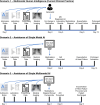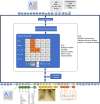Multimodal Artificial Intelligence in Medicine
- PMID: 39167446
- PMCID: PMC12282626
- DOI: 10.34067/KID.0000000000000556
Multimodal Artificial Intelligence in Medicine
Abstract
Traditional medical artificial intelligence models that are approved for clinical use restrict themselves to single-modal data ( e.g ., images only), limiting their applicability in the complex, multimodal environment of medical diagnosis and treatment. Multimodal transformer models in health care can effectively process and interpret diverse data forms, such as text, images, and structured data. They have demonstrated impressive performance on standard benchmarks, like United States Medical Licensing Examination question banks, and continue to improve with scale. However, the adoption of these advanced artificial intelligence models is not without challenges. While multimodal deep learning models like transformers offer promising advancements in health care, their integration requires careful consideration of the accompanying ethical and environmental challenges.
Copyright © 2024 The Author(s). Published by Wolters Kluwer Health, Inc. on behalf of the American Society of Nephrology.
Conflict of interest statement
Disclosure forms, as provided by each author, are available with the online version of the article at
Figures


References
-
- Artificial Intelligence (AI) and Machine Learning (ML) in Medical Devices [Internet]. U.S. Food and Drug Administration; 2020. Accessed September 3, 2023. https://www.fda.gov/media/142998/download
Publication types
MeSH terms
Grants and funding
LinkOut - more resources
Full Text Sources

